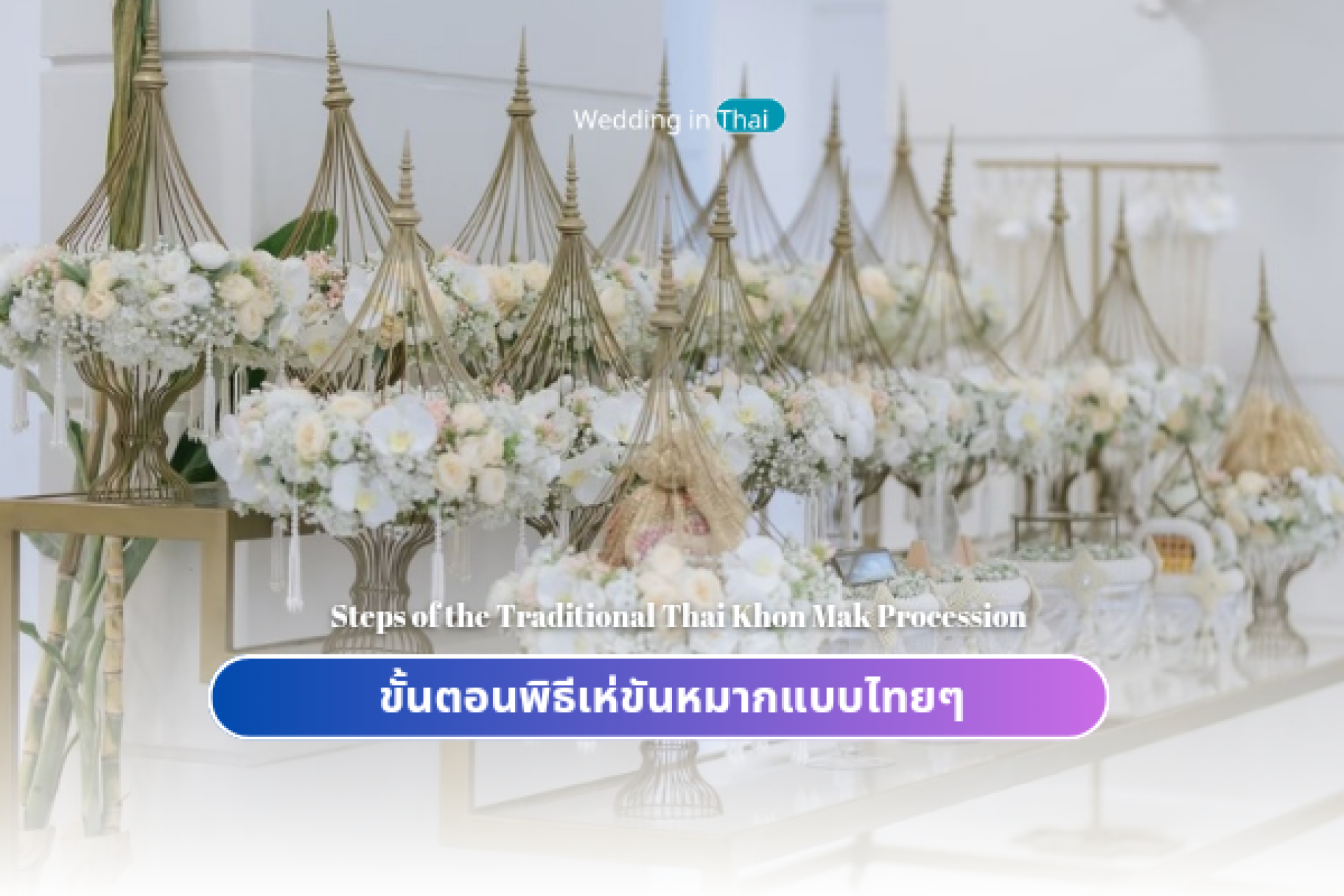Steps of the Traditional Thai Khon Mak Procession

Steps of the Traditional Thai Khan Mak Procession Ceremony
The Khan Mak Procession is a charming and meaningful part of a traditional Thai wedding. It symbolizes the grooms journey to the brides house, bringing love, respect, and unity between two families. Filled with music, joyful chants, and symbolic offerings, this ceremony is not only rooted in cultural significance but also adds color, laughter, and cherished memories to the couples special day.
1. Organizing the Khan Mak Procession A Parade of Love and Celebration
The groom leads the Khan Mak procession, accompanied by family members, close friends, and bearers of various ceremonial trays. Everyone dresses in traditional or formal attire, showing honor and respect to the brides family. The procession is lively, often accompanied by Thai musical instruments such as piphat (classical ensemble) or klong yao (long drums), setting a cheerful tone for the journey ahead.
2. Preparing the Khan Mak Trays Symbolic Offerings with Cultural Meaning
The trays in the procession are typically divided into two categories:
- Main Khan Mak Trays (Khan Mak Ek): These include trays of betel nuts and leaves (mak phlu), dowries (sinsod), and engagement ringsrepresenting commitment and readiness for marriage.
- Secondary Khan Mak Trays (Khan Mak Tho): These feature traditional Thai desserts, seasonal fruits, flower garlands, candles and incense, respectful fabrics (pha wai), and decorative flowerseach item symbolizing prosperity, harmony, and good wishes.
All trays are beautifully arranged with care, showing the sincerity of the groom and his family.
Once everything is prepared, the procession begins with music and traditional chants. A highlight of the ceremony is the He Khan Mak chantrhythmic poetic verses sung during the walk, often infused with humor and love, announcing the grooms arrival.
The procession may pause along the way for playful moments, songs, or light-hearted games with the bridal party, bringing laughter and creating unforgettable memories for everyone involved.
4. Passing Through the Silver and Gold Gates Fun and Symbolic
As the procession approaches the brides house, theyre met with symbolic Silver and Gold Gatesropes or chains held by the brides relatives or friends. The groom must offer small envelopes of money or gifts to unlock each gate. This is a fun part of the ceremony where friends may ask cheeky questions or require the groom to perform humorous tasks to continue.
5. Arriving at the Brides House Welcoming the Groom
Upon reaching the brides home, the groom and his entourage are warmly welcomed by her family. Relatives on the brides side will inspect the Khan Mak trays to ensure all traditional items are present and complete, which reflects the grooms sincerity and respect for cultural values.
6. Continuing Ceremonies Engagement, Dowry, and Blessings
Following the welcoming, the engagement ceremony begins. The groom presents the dowry (sinsod) and engagement ring, officially marking the couples intent to marry. Elders may then perform a wrist-tying blessing ceremony (phook khor mue)tying white threads around the couples wrists while offering words of wisdom and blessings for their life ahead.
The He Khan Mak Chant Poetry of Love and Respect
The chant is a key part of the processionrecited or sung by a designated lead, often in rhyming couplets filled with charm and blessings. An example of a chant may go:
This tray of Khan Mak is filled with love,
Carefully arranged from the heart above.
The groom has come from near and far,
Bearing love as bright as a shining star.
These verses bring life and laughter to the event while reinforcing messages of love, honor, and togetherness.
The Khan Mak procession is more than a walk to the brides houseits a beautiful symbol of union, tradition, and the joyful blending of two families. Full of meaningful rituals, heartfelt exchanges, and cultural beauty, it sets the tone for a marriage filled with love, fun, and shared values.


